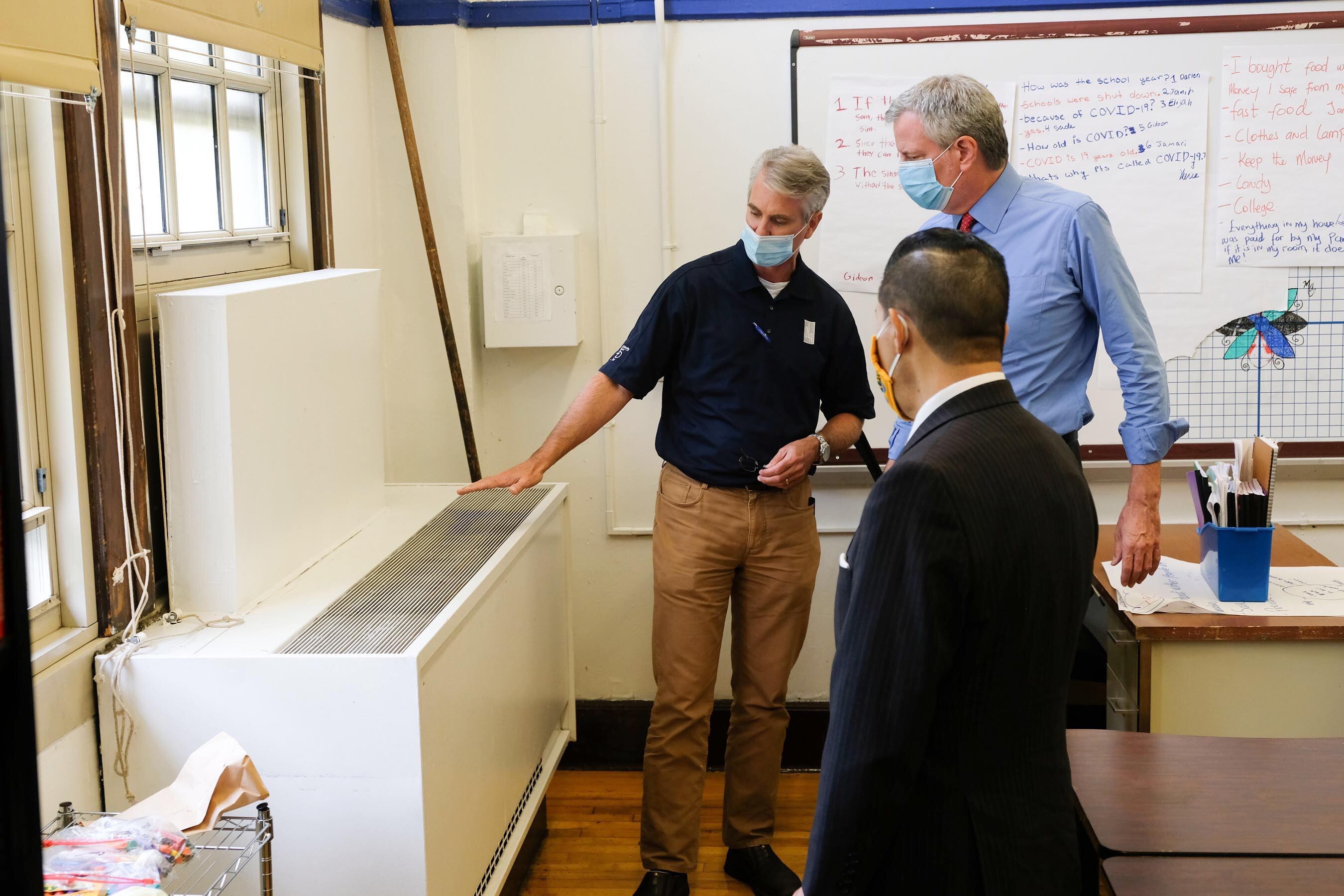As temperatures rise, the lack of functioning air conditioning in some New York City classrooms is proving especially difficult to handle while students and staff are masking, forcing some parents to speak out.
“Last week it was 90 degrees, and the classrooms get quite hot. What do we do for our kids for the next two weeks?” Brooklyn mom Sabina Singer asked education department director of operations Kevin Moran at last week’s Chancellor’s Parent Advisory Council meeting.
Other parents asked whether buildings participating in the city’s massive summer school initiative, called Summer Rising, would all have AC by the time the program starts. The education department said that Summer Rising programs will be in air conditioned buildings, though this does not confirm that all classrooms have AC.
The city promised all classrooms would have air conditioning by 2022, and officials said they were “ahead of schedule,” with less than 2,000 AC units remaining for installation. Moran reassured the parents that AC units were being installed at schools every day.
“If there’s a school that you think doesn’t have air conditioning in the classroom, I’d like to know about it,” Moran told Singer.
Some parents are questioning why it is their responsibility to advocate for air conditioning when it has been promised to them by the city.
In 2017, Mayor Bill de Blasio announced his five-year commitment to get air conditioning units into every New York City public school classroom. But “AC for all,” as the de Blasio administration’s plan has been referred to, appears to be a misnomer. Thousands of school spaces are excluded from that plan, which allocated $28.75 million over five years for air conditioning installation. Physical education and public assembly spaces – such as gyms and cafeterias – were never included. About 50% of such spaces lack functional AC units, according to education department data from January. That matters even more this year — and likely next year as well — as many schools are using non air-conditioned gyms and cafeterias as classrooms to continue social distancing.
Brooklyn mom Hee Jin Kang, whose son is in fourth grade at P.S.132 in Brooklyn, said his school has had spotty air conditioning for as far back as she can remember. Her son’s fourth grade classroom did not have air conditioning this year, so Kang recently contacted her state assemblymember, Emily Gallagher, to push for AC.
This past weekend, portable, temporary AC units were installed in certain classrooms, including her sons.
“I don’t understand why it should take a parent to fuss about it to get air conditioning,” said Kang.
A spokesperson for Gallagher confirmed that it was in response to parents like Kang that the education departments installed these AC units.
“It was stiflingly hot,” said spokesperson Andrew Epstein. “We heard that kids had to take breathing breaks outside because it was so stifling in the classroom.”
The education department said the portable units installed at P.S. 132 last week will remain in place until new, permanent window AC units are installed over the summer.
Studies show that heat makes it more difficult to learn. A team of researchers found that for every five school days hotter than 80 degrees, students performed about 1% worse on year-end standardized tests.
In New York, the United Federation of Teachers has been advocating at the city, state and federal level to improve classroom conditions and get all schools working air conditioning, said a UFT spokesperson.
In conjunction with New York State United Teachers, the UFT is advocating for legislation that would establish an unsafe maximum temperature in school buildings. Under that legislation, a classroom would need to be vacated should the temperature rise to above 88 degrees. Though the legislation was not passed this year, the UFT is continuing to push for it, while also advocating for a federal infrastructure plan that includes upgrades for school buildings.







